◄ Back to Driving Force, Winter 2016
2016: The Year in Review
Laws and regulations continuously impact the way automotive enthusiasts enjoy vehicles of all kinds. The SEMA Action Network’s (SAN) goal is to stay on top of all relevant state and federal legislation and regulations to help promote advocacy efforts across the nation so that automobile hobbyists may continue pursuing their passion. The following details the SAN’s state and federal successes in 2016.
State Update
 |
Alabama Titles: Legislation to exempt motor vehicles more than 35 years old from the requirement that they have a certificate of title was signed into law by Governor Robert J. Bentley. Previously, only vehicles of model year ’74 and older were exempted. Trailers 20 model years old and older are also exempted under the new law. Previously, only trailers of the ’89 model year and earlier were exempted. This new SAN-supported law takes effect on January 1, 2017. | |
|
|
||
 |
Arizona Gas Tax/Road Usage Tax: A bill to raise gas taxes and require a study of a road usage tax died when the legislature adjourned for the year. The legislation would have required a study of a road usage tax and potential pilot program. In addition to creating privacy concerns, the measure sought to penalize national efforts to create a more fuel efficient vehicle fleet by taxing drivers based on vehicle mileage. | |
|
|
||
 |
California License Plates: After heavy support from the SAN, legislation to expand the authorization of year-of-manufacture license plates to include owners of ’80 or older model-year vehicles was signed into law by Governor Jerry Brown. Previous law only authorized owners of vehicles that are of a ’69 or older model year or owners of a commercial vehicle or pickup truck that is ’72 or older to utilize California year-of-manufacture license plates. These plates must be legible and serviceable. Under the new law, the state may consult with an organization of old car hobbyists in determining whether the date of year of the license plate corresponds to the model-year date when the vehicle was manufactured. California Vehicle Retirement Program: Legislation to require the state to expand its program for the retirement of older passenger vehicles and light- and medium-duty trucks was not approved by the Senate Environmental Quality Committee. The bill had passed in the Assembly. Current law provides for “an enhanced fleet modernization program” to be administered by the state. Beginning in the 2016–2017 fiscal year, the bill would have required the agencies to set specific and measurable goals for the program’s expansion. California Transportation Fees: Legislation that would, among other things, raise the gas tax by $0.12 per gallon, increase the annual vehicle registration fee by $35, add a new $100 annual vehicle registration fee for zero-emission motor vehicles and impose a new $35 annual road access charge on each vehicle died when the legislature adjourned for the year. The additional funds raised by the bill would have been used to address deferred maintenance on the state highways and local streets and roads. |
|
|
|
||
 |
Connecticut Titles: In a victory for the SAN and hobbyists statewide, legislation to require the state, upon the owner’s request, to issue titles for older vehicles not currently required to be titled under state law was signed into law by Governor Dannel Malloy. These vehicles include those more than 20 model years old. The new law expands the out-of-state market for older Connecticut motor vehicles and enhances their value to collectors. | |
|
|
||
 |
Hawaii Exhaust Systems: A bill that sought to prohibit the use, sale or installation of an exhaust system “that has been changed or modified from the factory design so as to increase the volume or audibility of the explosions within the vehicle’s motor” died when the legislature adjourned for the year. This SAN-opposed legislation would have required that safety inspection stations perform a test to ensure that a vehicle conforms to the law. Fines for noncompliance would have ranged from $100 to $500 for each offense. Hawaii Noise Emissions: Legislation to allow the state director of transportation to adopt regulations to establish permissible noise emission levels for motor vehicles in accordance with approved U.S. Environmental Protection Agency (EPA) standards died when the legislature adjourned. The bill failed to recognize that the EPA has no noise emissions standards for passenger cars and trucks, only motorcycles. Further, the bill provided no objective test by which vehicles would be tested. Hawaii Fees: Legislation to increase annual registration fees from $45 to $76.50 annually, increase the gas tax from 16¢ to 19¢ per gallon, and increase the motor vehicle weight tax from 1.75¢ to 2.75¢ per pound died when the legislature adjourned for the year. The bill had passed the Senate and sent to the House for consideration. |
|
|
|
||
 |
Indiana Off-Highway Trails: A bill to allow the operator of a nonregistered off-road vehicle or snowmobile from another state or country to purchase a trail use tag to operate on designated trails and properties was approved by the Indiana House and Senate and signed into law by Governor Mike Pence. | |
|
|
||
 |
Maryland Historic Vehicles: A bill that makes minimal changes to Maryland’s historic vehicle requirements was signed into law by Governor Larry Hogan. As introduced, the bill would have subjected historic vehicles of model year ’86 and later to undergo periodic safety inspections. After SAN members expressed concerns, an amendment was made to the new law to exclude historic vehicles from the requirement that they receive an inspection certificate prior to titling and registration. The law clarifies that these vehicles are not to be used for regular transportation to employment or school and for commercial purposes and subjects historic vehicles of model-year ’86 and later to equipment repair orders. These repair orders would be issued for vehicle safety equipment that is in disrepair. The new law does not change the age requirement for historic vehicles, does not require that they be insured by a show or antique vehicle insurance policy and does not require that the owner have a “daily-driver” vehicle registered in the state as had previously been proposed. | |
|
|
||
 |
Michigan Forest Roads: SAN-supported legislation to require that forest roads be open to motorized use by the public unless otherwise designated by the state was signed into law by Governor Rick Snyder. Under the new law, before the state restricts a road or trail used to access public land, it must provide local governments in which the land is located written notice that includes the reason for the restriction. Other lands permitted for off-highway use include designated roads that are not forest roads, designated trails and other designated areas. | |
|
|
||
 |
Minnesota Miles Traveled Tax: Legislation to mandate payment of a “recoupment” surcharge of up to $95 died when the legislature adjourned for the year. The surcharge would have been calculated to levy the highest tax on owners of the most fuel-efficient vehicles. Separate legislation to require the Department of Transportation to take steps to implement a vehicle mileage user fee to tax drivers on actual miles driven also died. | |
|
|
||
 |
Missouri Miles Traveled Tax: Legislation to require the state to charge and collect a miles-driven fee of up to $200 for a one-year vehicle registration and up to $400 for a two-year vehicle registration was withdrawn by the bill’s sponsor. Under the measure, this fee would have been charged in addition to all other registration fees and would not have replaced the gas tax. | |
|
|
||
 |
Nebraska Single Plate: A SAN-model bill to provide for the issuance of a single license plate for passenger cars which were not originally equipped with a bracket on the front of the vehicle to display a plate was signed into law by Governor Pete Ricketts. The new law also allows special-interest vehicles that use the special-interest vehicle license plate to run a single plate. The law will take effect on January 1, 2017. | |
|
|
||
 |
New Hampshire Antique Trailers: Legislation to eliminate the requirement that antique trailers have only one axle to qualify for antique trailer plates was signed into law by Governor Maggie Hassan. The new law lowers the annual registration fee for the approximately 15,000 multi-axle trailers to $6. New Hampshire Road User Fee: A SAN-opposed legislation to establish a road usage fee for motor vehicles registered to travel on state roads died when the legislature failed to act. Under the bill, the fee would have been based on the equivalent miles per gallon of the vehicle and collected at the time of annual registration of the vehicle. The measure would have imposed its harshest penalties on those vehicles that have the highest miles per gallon rating, with a maximum tax of $149.85. New Hampshire Off-Highway Vehicles: A bill to re-establish the authority of the state to permit larger off-highway recreational vehicles at Jericho Mountain State Park was signed into law by Governor Maggie Hassan. Under New Hampshire law, “Off-highway recreational vehicle means any mechanically propelled vehicle used for pleasure or recreational purposes running on rubber tires, tracks or cushion of air and dependent on the ground or surface for travel, or other unimproved terrain whether covered by ice or snow or not, where the operator sits in or on the vehicle.” This SAN-supported legislation is a victory for off-road enthusiasts statewide. New Hampshire Emissions: A bill to exempt rare or historically significant vehicles from emissions control requirements was signed into law by Governor Maggie Hassan. Under previous law, only vehicles 20 or more years old were exempt. The new SAN-supported law becomes effective on January 1, 2017. |
|
|
|
||
 |
New Jersey Emissions Tests: Officials are moving forward with a plan to eliminate the requirement that pre-’96-model-year motor vehicles undergo emissions testing as the state will eliminate tailpipe emissions tests. The state plans to continue the on-board diagnostic tests used to check emissions on cars made since 1996. Officials believe that the revised requirements will save millions of dollars by reducing both the number of inspections at state facilities and the cost per inspection. The emissions test will continue to include visual checks for things such as liquid leaks and visible smoke, while the gas-cap check that tests whether fumes are escaping from a gas tank will switch to a visual inspection. In New Jersey, vehicles are inspected every other year and exempted for their first five years. | |
|
|
||
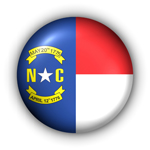 |
North Carolina Emissions: Legislation that would remove five counties from the list of jurisdictions where motor vehicle emissions inspections are required was approved by the House and Senate and signed into law by Governor Pat McCrory. | |
|
|
||
 |
South Dakota Single Plate: A measure to allow the issuance of a single license plate for special interest motor vehicles was signed into law by Governor Dennis Daugaard. The new law requires that the single registration plate be attached to the rear of the vehicle. A special interest motor vehicle is “a vehicle that is collected, preserved, restored, or maintained by the owner as a leisure pursuit and is not used for general or commercial transportation.” The new law provides that the vehicle owner must sign an affidavit attesting that the vehicle is driven less than six thousand miles per year; is not used for general or commercial transportation, but only for occasional transportation, public displays, parades, and related pleasure or hobby activities. The owner will also be required to submit the odometer reading annually upon registration renewal. | |
|
|
||
 |
Tennessee Emissions: A bill to extend the emissions inspection exemption for new cars was signed into law by Governor Bill Haslam. Under the new law, all vehicles three years old and newer would be excused regardless of mileage. Previous law only exempted new motor vehicles being registered for the first time or one year from initial registration. | |
|
|
||
 |
Vermont Exhaust Systems: A SAN-opposed bill to ban motor-vehicle exhaust systems that increase the noise level died when the legislature adjourned for the year. Under the measure, violators would not have passed the state’s required inspection, subjecting them to fines of up to $350. The bill also did not provide an opportunity for vehicle hobbyists to install and use aftermarket exhaust systems that meet an objective decibel limit under a fair and predictable test. | |
|
|
||
 |
West Virginia Racing: Favored by racing enthusiasts statewide, a bill authorizing local governments to hold sanctioned motor vehicle races on public roads or airports under their jurisdiction was signed into law by Governor Earl Ray Tomblin. The law also requires issuance of a permit for the racing event and declares that an authorized racing event is not a nuisance or subject to speed restrictions. West Virginia Race Cars: A House Concurrent Resolution to urge the U.S. EPA to allow the conversion of vehicles originally designed for on-road use into race cars was approved by the West Virginia Legislature. The resolution came in response to objections from SAN members and enthusiasts and recognizes that while the Clean Air Act prohibits certain modifications to motor vehicles, it is clear that vehicles built or modified for racing, and not used on the streets, are not subject to EPA regulation. West Virginia Exhaust Noise: Legislation to make it a criminal offense to disturb the peace with “noise from an exhaust system of any vehicle that is not equipped or constructed so as to prevent any disturbing or unreasonably loud noise” was not approved. West Virginia Collector Car Appreciation Day: The West Virginia Legislature passed a House Concurrent Resolution designating the second Friday in July as Collector Car Appreciation Day in the state. |
|
|
|
||
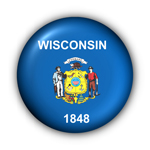 |
Wisconsin Collector Vehicle Appreciation Day: An Assembly Joint Resolution to annually designate the second Friday in July as Collector Vehicle Appreciation Day in the state was approved by the full Wisconsin Assembly. | |
|
|
||
 |
Canada Collector Vehicle Appreciation Day: The provinces of Saskatchewan, Prince Edward Island and Nova Scotia issued proclamations designating July 2016 as Automotive Heritage Month in the province. British Columbia issued a proclamation designating July 9, 2016, as Collector Car Appreciation Day and the month of July 2016, to be Collector Car Appreciation Month. The province of Manitoba and the city of Calgary issued proclamations designating July 8, 2016, as Collector Car Appreciation Day. | |
Federal Update
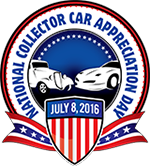 |
National Collector Vehicle Appreciation Day: The seventh annual Collector Car Appreciation Day (CCAD) took place on Friday, July 8, 2016. The U.S. Senate approved a resolution to focus attention on the vital role automotive restoration and collection plays in American society. Thousands of Americans gathered at car cruises, parades and other events to celebrate our nation’s automotive heritage. | |
|
|
||
 |
EPA and Racing Parts: SAN continues to advance the “Recognizing the Protection of Motorsports (RPM) Act,” which clarifies that the Clean Air Act allows for the modification of motor vehicles for race use only and that making, selling and installing race products for this purpose is not unlawful tampering. The RPM Act has garnered strong support in Congress, including 118 sponsors in the House and 28 in the Senate. | |
|
|
||
 |
E15/Ethanol: A SAN-supported bill has been introduced in the U.S. Congress that would cap the yearly amount of ethanol to be blended into transportation fuel at 9.7%. The legislation would replace ever-increasing ethanol mandates required under the Renewable Fuel Standard (RFS). The EPA is relying on expanded sales of E15 (gas that contains 15% ethanol) to meet the RFS targets. Ethanol, especially in higher concentrations such as E15, can cause metal corrosion and dissolve certain plastics and rubbers in automobiles produced before 2001 that were not constructed with ethanol- resistant materials. | |
|
|
||
 |
Bonneville Salt Flats (BSF): The salt flats have significantly decreased in size, strength and thickness over a number of decades as salt brine has been channeled away from the area. The SAN, along with other organizations and companies comprising the Save the Salt Coalition, is working closely with the U.S. Bureau of Land Management (BLM), which manages the salt flats, in addition to federal and state lawmakers, on ways to restore the BSF and its 13-mile speedway. The Coalition has proposed a comprehensive plan which includes increasing the amount of salt being pumped onto the salt flats during the winter. The Coalition is working with lawmakers to introduce federal legislation to help implement a restoration plan. | |
|
|
||
 |
Utah Public Lands Initiative: The U.S. House Natural Resources Committee passed a bill that would finalize land-use designations covering more than 18 million acres of land in seven eastern and southern Utah counties. The Utah Public Lands Initiative (PLI) creates motorized recreation zones in San Juan and Grand Counties encompassing more than 375,000 acres, along with a 93-mile red rock OHV trail connecting towns in Emery, Grand and San Juan Counties. SAN supports the PLI’s collaborative approach to making final designations in order to provide certainty regarding how land is managed, including wilderness, conservation and recreation areas. Without the legislation, 1.4 million acres of land may soon be designated as the Bears Ears National Monument. The legislation will likely be scheduled for a vote by the House of Representatives after the November election. The bill has not yet been introduced in the U.S. Senate. | |
|
|
||
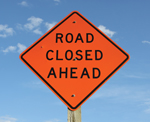 |
National Monuments: SAN is working to advance a bill in the U.S. Congress that would curtail the President’s power to unilaterally designate national monuments by requiring their approval by Congress and the impacted state legislature(s). The SAN opposes unilateral national monument designations, as they prohibit new roads or trails for motorized vehicles and require a new land management plan be drafted that could lead to more road closure. | |
|
|
||
 |
National OHV Area Designations: SAN is supporting legislation that would permanently designate six existing OHV areas comprising 300,000 acres in San Bernardino County as national OHV areas: Johnson Valley, Spangler Hills, El Mirage, Rasor, Dumont Dunes and Stoddard Valley. The bill was introduced by Rep. Paul Cook (R-CA). Sen. Dianne Feinstein (D-CA) has introduced a similar bill that also protects OHV areas, although in lesser amounts. OHV Access to Clear Creek: The U.S. Senate Energy and Natural Resources Committee held a hearing on SAN-supported legislation to protect off-highway vehicle (OHV) access to public lands. The committee reviewed legislation already approved by the U.S. House of Representatives to re-open the 75,000-acre Clear Creek National Recreation Area (NRA) in California’s San Benito and Fresno Counties for recreational use. Clear Creek was closed in 2008 due to concerns about exposure to asbestiform minerals that occur naturally in the area’s rock and soil. However, an independent asbestos risk assessment study requested by the California Off-Highway Motor Vehicle Recreation Commission concluded that it was possible to allow OHV use while shielding the public from unacceptable exposure risks. The legislation would re-open more than 240 miles of public trails. |
|
|
|
||
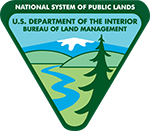 |
OHV Access to Imperial Sand Dunes: A federal appeals court approved a 2013 plan to expand OHV access in southern California’s Imperial Sand Dunes. The plan had been challenged by environmentalists looking to protect the Peirson’s milkvetch, a threatened plant species under the Endangered Species Act. As a result of the appeals court ruling, the federal government may now implement its plan to expand OHV access at the Imperial Sand Dunes Recreational Area by 49,300 acres for a combined total of more than 127,000 acres at the recreation area. | |
|
|
||
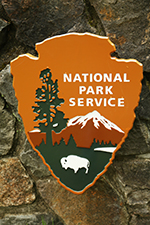 |
OHV Access to Cape Hatteras National Seashore: The federal government has proposed changes to its special regulation for OHV use at Cape Hatteras National Seashore, North Carolina. The revisions are the result of a SAN-supported federal law enacted in 2014 that required officials to revisit a management plan restricting OHV access to large portions of the seashore. The government is proposing to revise the times that certain beaches are open to OHV use in the morning and extend the dates that certain seasonal OHV routes are open in the fall and spring. It would also replace an OHV route designation on Ocracoke Island with a park road to allow vehicle access and pedestrian use of a soundside area without the requirement for an OHV permit. | |
